This article was co-authored by Tu Anh Vu, DMD and by wikiHow staff writer, Jessica Gibson. Dr. Tu Anh Vu is a board certified dentist who runs her private practice, Tu's Dental, in Brooklyn, New York. Dr. Vu helps adults and kids of all ages get over their anxiety with dental phobia. Dr. Vu has conducted research related to finding the cure for Kaposi Sarcoma cancer and has presented her research at the Hinman Meeting in Memphis. She received her undergraduate degree from Bryn Mawr College and a DMD from the University of Pennsylvania School of Dental Medicine.
There are 21 references cited in this article, which can be found at the bottom of the page.
This article has been viewed 130,269 times.
Loose teeth are a part of life for most kids. But, if you're an adult and have a loose tooth, you'll need to improve your dental hygiene. Teeth are made up of layers of living tissue with a hard enamel exterior. This enamel is made up of minerals that can be damaged by bacteria (demineralization) through acids which causes cavities and other dental problems.[1] You can reduce and reverse tooth decay and other dental problems like gingivitis and periodontitis by making changes to your diet and dental habits.
Steps
Practicing Good Dental Hygiene
-
1See your dentist for a cleaning. You should see your dentist at least twice a year if you don't have dental issues, like gingivitis.[2] Your dentist and dental hygienist will deep clean your teeth, taking care to deep clean the pockets that otherwise can't be cleaned by brushing or flossing.[3]
- Calculus gets under the gums creating a constant deposit of aggressive bacteria, which leads to inflamed gums, gum recession and bone loss.
- If you have gingivitis or periodontitis, talk with your dentist about getting more frequent cleanings.
-
2Brush your teeth correctly.[4] Take a toothbrush with soft bristles and set it against your gums at a 45-degree angle. Brush the outer surfaces, inner surfaces, and chewing surfaces of your teeth using small short strokes. Brush each surface about 10 times using gentle pressure. Don't forget to hold the brush vertically and brush up-and-down to clean the inside surfaces of your front teeth. Brush your tongue, spit out the toothpaste, and leave the foam in your mouth without rinsing.[5]
- Brush your teeth and tongue with a tartar-control toothpaste at least twice a day.
- Leaving the toothbrush foam on your teeth gives the minerals some time to be absorbed into your teeth, especially if you use a fluoride toothpaste which has more than 1200ppm.
Advertisement -
3Floss daily.[6] Unwind about 18 inches of dental floss and wind most of it around the middle finger of one hand with the rest around the middle finger of your other hand. Firmly hold the floss between your thumb and forefinger. Guide the floss between each tooth, gently using a back and forth and side to side motion to gently move the floss between your teeth without causing it to snap. Be sure to rub each side of each tooth before unwinding more floss and moving to the next tooth.[7]
- Or, you can use a "water pick" (a handheld device that steadily sprays water between your teeth and gums). Consider using a "water pick" if you don't like flossing, have braces, have bridges, or can't floss. Fill it with a 50:50 solution of mouthwash and water to increase the antibacterial protection.
-
4Use antibiotics or antiseptic rinses. Your dentist might prescribe one of these to use daily if you have gum disease. You may need to take oral antibiotics like low-dose doxycycline to control bacteria that damages the gums, which may last for up to three months. Or, your dentist could recommend that you use an antimicrobial rinse as a mouthwash.[8]
- You may be told to place antiseptic chips or gel packets in the deep pockets between your gums and teeth. If you are not too handy ask a member of your household to help you, or schedule an appointment with your dentist. These can control harmful bacteria.
-
5Use herbs to massage your gums. Natural anti-inflammatory herbs and oils can treat bacteria, reducing gum inflammation. Try gently massaging your gums with one of these to get the following benefits:
- Turmeric: anti-inflammatory, antioxidant, antibiotic.[9]
- Aloe Vera: anti-inflammatory, which is good for those who suffer from gingivitis or periodontis.
- Mustard oil: antibiotic, anti-inflammatory.[10]
- Peppermint oil: antibiotic, anti-inflammatory, breath freshener.[11]
- Oregano oil: antibiotic, immune-booster.[12]
- Amla (Indian gooseberry): anti-inflammatory, antioxidants, high levels of vitamin C.[13]
- Sea salt: prevents bacterial growth and tightens gums around the teeth.[14]
Reducing and Reversing Tooth Decay Through Diet
-
1Limit sugars and processed starches. Bacteria feeds off of sugar, so reduce your sugar intake to keep bacteria from thriving.[15] Avoid processed and pre-packaged foods, and sweetened drinks. Read labels and avoid the product if sugar, high-fructose corn syrup, cane syrup, or another sweetener is listed as one of the top five ingredients. Reduce or avoid the following, which can have an even worse effect if you are consuming more than one of these items on a regular basis:
- Pre-packaged snacks, crackers, chips.
- Breads or cakes.
- Soda, fruit drinks, sweet tea.
-
2Use honey or stevia in place of sugar. When you do eat something sweet, use honey which has antibacterial properties and stevia. Stevia is an herb that is 200 times sweeter than sugar and has no calories.[16]
- Avoid using artificial sweeteners like aspartame which can cause glucose intolerance (prediabetes) by changing the balance of your gut bacteria.[17]
-
3Pay attention to the amount of citrus you eat. Eat citrus fruits in moderation and be sure to rinse out your mouth with water and never brush immediately after eating. This will decrease the amount of acid in your mouth.
- The natural sugars in fruit, fructose, don't feed bacteria and are not found in high levels in fresh fruit like apples, pears, or peaches. Don't be afraid to eat fresh fruits.[18]
-
4Chew your meals slowly and drink water. Take the time to chew each bite completely so that your mouth produces saliva.[19] Saliva can naturally remineralize your teeth during meals and the more you chew the more saliva will be released. You should also drink 6 to 8 eight-ounce glasses of pure water a day. You don't need to drink mineral water; get your minerals from your diet instead. It's fine to drink well or tap water, which contain minerals unique to your area.[20]
- Tap water in much of the US is treated with fluoride to help prevent tooth decay. Though many people choose bottled water over tap water, most bottled water does not have much (if any) fluoride. If your water is "de-ionized, purified, demineralized, or distilled," then any naturally occurring fluoride has been removed.[21] [22]
- Drinking water is simply a way to stay hydrated without ingesting substances that damage your teeth.
- If you eat sour acidic foods, chew even slower to increase the amount of saliva you make.
-
5Take a mineral supplement. Your multivitamin should contain minerals, especially calcium and magnesium. Magnesium is important in preventing calcium loss, which can weaken your bones and teeth. Try to get at least 1000 mg of calcium and 300 to 400 mg of magnesium every day if you do not consume products such as milk, cheese or yogurt. Otherwise you will have an increased rate of calculus deposits. If you're a man over 71 or a woman over 51, try to get 1200 mg of calcium every day.
- Children taking children's vitamins have different magnesium needs. From birth to 3 years old, they need 40 to 80 mg a day; for kids between three and six years old, they need 120 mg a day; and for kids up to 10 years old, they need 170 mg a day.[23]
-
6Get more vitamin D. Vitamin D and calcium work together to strengthen your bones and teeth. Vitamin D can also help destroy bacteria that causes dental decay. Try to get about 600 IU (international units) of vitamin D every day. Adults over 70 years should bet 800 IU every day. Or, you can spend about 10–15 minutes every third day in the afternoon sun without sunscreen. Expose your arms, legs, and back, if you can. To get vitamin D from your diet eat foods rich in vitamin D. These include:[24]
- Fish (salmon, snapper, whitefish, mackerel).
- Soymilk fortified with vitamin D.
- Coconut milk.
- Cow's milk.
- Eggs.
- Yogurt.
Expert Q&A
Did you know you can get expert answers for this article?
Unlock expert answers by supporting wikiHow
-
QuestionCan loose tooth tighten back up?
 Tu Anh Vu, DMDDr. Tu Anh Vu is a board certified dentist who runs her private practice, Tu's Dental, in Brooklyn, New York. Dr. Vu helps adults and kids of all ages get over their anxiety with dental phobia. Dr. Vu has conducted research related to finding the cure for Kaposi Sarcoma cancer and has presented her research at the Hinman Meeting in Memphis. She received her undergraduate degree from Bryn Mawr College and a DMD from the University of Pennsylvania School of Dental Medicine.
Tu Anh Vu, DMDDr. Tu Anh Vu is a board certified dentist who runs her private practice, Tu's Dental, in Brooklyn, New York. Dr. Vu helps adults and kids of all ages get over their anxiety with dental phobia. Dr. Vu has conducted research related to finding the cure for Kaposi Sarcoma cancer and has presented her research at the Hinman Meeting in Memphis. She received her undergraduate degree from Bryn Mawr College and a DMD from the University of Pennsylvania School of Dental Medicine.
Board Certified Dentist No, a loose tooth isn't going to magically tighten up on its own. If you have a loose tooth, it's time to see a dentist. Teeth typically become loose when you have gum disease, which needs to be assessed by a professional. Try not to worry, though. If you can get your gums back in working order and you maintain a good dental hygiene routine, this is unlikely to happen in the future!
No, a loose tooth isn't going to magically tighten up on its own. If you have a loose tooth, it's time to see a dentist. Teeth typically become loose when you have gum disease, which needs to be assessed by a professional. Try not to worry, though. If you can get your gums back in working order and you maintain a good dental hygiene routine, this is unlikely to happen in the future! -
QuestionI'm 52 yrs old, and I have a loose bottom tooth. How long will it stay there if I don't chew with it?
 Cristian Macau, DDSDr. Macau is an oral surgeon, periodontist, and aesthetician at Favero Dental Clinic in London. He received his DDS from Carol Davila University of Medicine in 2015.
Cristian Macau, DDSDr. Macau is an oral surgeon, periodontist, and aesthetician at Favero Dental Clinic in London. He received his DDS from Carol Davila University of Medicine in 2015.
Doctor of Dental Surgery First, you cannot control your teeth during chewing especially the ones in front. You can control the sides where you chew but not each individual tooth. It depends on the pathology your tooth may have and also the grade of mobility. It is best to see a dentist to prevent any unnecessary future complications and pain.
First, you cannot control your teeth during chewing especially the ones in front. You can control the sides where you chew but not each individual tooth. It depends on the pathology your tooth may have and also the grade of mobility. It is best to see a dentist to prevent any unnecessary future complications and pain. -
QuestionWill a loose tooth tighten back up?
 Tu Anh Vu, DMDDr. Tu Anh Vu is a board certified dentist who runs her private practice, Tu's Dental, in Brooklyn, New York. Dr. Vu helps adults and kids of all ages get over their anxiety with dental phobia. Dr. Vu has conducted research related to finding the cure for Kaposi Sarcoma cancer and has presented her research at the Hinman Meeting in Memphis. She received her undergraduate degree from Bryn Mawr College and a DMD from the University of Pennsylvania School of Dental Medicine.
Tu Anh Vu, DMDDr. Tu Anh Vu is a board certified dentist who runs her private practice, Tu's Dental, in Brooklyn, New York. Dr. Vu helps adults and kids of all ages get over their anxiety with dental phobia. Dr. Vu has conducted research related to finding the cure for Kaposi Sarcoma cancer and has presented her research at the Hinman Meeting in Memphis. She received her undergraduate degree from Bryn Mawr College and a DMD from the University of Pennsylvania School of Dental Medicine.
Board Certified Dentist
References
- ↑ Tu Anh Vu, DMD. Board Certified Dentist. Expert Interview. 20 May 2020.
- ↑ https://www.humana.com/learning-center/health-and-wellbeing/healthy-living/teeth-cleaning
- ↑ Tu Anh Vu, DMD. Board Certified Dentist. Expert Interview. 20 May 2020.
- ↑ Tu Anh Vu, DMD. Board Certified Dentist. Expert Interview. 20 May 2020.
- ↑ http://www.mouthhealthy.org/en/az-topics/b/brushing-your-teeth
- ↑ Tu Anh Vu, DMD. Board Certified Dentist. Expert Interview. 20 May 2020.
- ↑ http://www.mouthhealthy.org/en/az-topics/f/Flossing%20Steps
- ↑ http://www.nidcr.nih.gov/oralhealth/Topics/GumDiseases/PeriodontalGumDisease.htm
- ↑ Hu P, Huang P, Chen MW., Curcumin attenuates cyclooxygenase-2 expression via inhibition of the NF-κB pathway in lipopolysaccharide-stimulated human gingival fibroblasts. Cell Biol Int. 2013 May;37(5):443-8.
- ↑ Komorowski RC, Torneck CD, Hu JW. Neurogenic inflammation and tooth pulp innervation pattern in sympathectomized rats. J Endod. 1996 Aug;22(8):414-7.
- ↑ Duss C, Lang NP, Cosyn J, Persson GR. A randomized, controlled clinical trial on the clinical, microbiological, and staining effects of a novel 0.05% chlorhexidine/herbal extract and a 0.1% chlorhexidine mouthrinse adjunct to periodontal surgery. J Clin Periodontol. 2010 Nov;37(11):988-97.
- ↑ Ok E, Adanir N, Ozturk T. Antibacterial and smear layer removal capability of oregano extract solution. Eur J Dent. 2015 Jan-Mar;9(1):20-4.
- ↑ Singh A, Purohit B. Tooth brushing, oil pulling and tissue regeneration: A review of holistic approaches to oral health. J Ayurveda Integr Med. 2011 Apr;2(2):64-8.
- ↑ Sun XW, Sun GL, Xiao LJ. [Evaluation of gingival inflammation related to different retraction agents]. [Article in Chinese].Hua Xi Kou Qiang Yi Xue Za Zhi. 2008 Feb;26(1):53-5.
- ↑ http://www.mouthhealthy.org/en/az-topics/d/decay
- ↑ http://www.diabetes.org/food-and-fitness/food/what-can-i-eat/understanding-carbohydrates/artificial-sweeteners/?referrer=https://www.google.com/
- ↑ http://www.ncbi.nlm.nih.gov/pmc/articles/PMC3727955/
- ↑ https://www.dentalhealth.org/tell-me-about/topic/sundry/diet
- ↑ https://books.google.com/books?id=PhdtLQVtCMMC&pg=PA519&lpg=PA519&dq=chew+slowly+to+increase+saliva&source=bl&ots=YxwlM3j3zL&sig=GsaWBneTbNB-TgoZTIn8ifTGhEc&hl=en&sa=X&ved=0ahUKEwjg8JWT-s_KAhVWzGMKHdppAbcQ6AEISTAH#v=onepage&q=chew%20slowly%20to%20increase%20saliva&f=false
- ↑ http://www.ars.usda.gov/SP2UserFiles/Place/80400525/Articles/NDBC32_WaterMin.pdf
- ↑ http://www.cdc.gov/fluoridation/faqs/bottled_water.htm
- ↑ http://www.ncbi.nlm.nih.gov/pubmed/10728111
- ↑ http://www.mayoclinic.org/drugs-supplements/magnesium-supplement-oral-route-parenteral-route/proper-use/drg-20070730
- ↑ http://www.dietitians.ca/Your-Health/Nutrition-A-Z/Vitamins/Food-Sources-of-Vitamin-D.aspx
- ↑ http://www.mouthhealthy.org/en/az-topics/d/decay
About This Article
To deal with a loose tooth, improve your dental hygiene by brushing your teeth twice daily. When you brush, hold the brush at a 45-degree angle against your gums. Additionally, be sure to floss daily between each tooth to get rid of bacteria your toothbrush can't reach. You should also use an antimicrobial mouthwash every day. If your gums are inflamed, massage them with anti-inflammatory herbs like Aloe Vera or turmeric. To find out how often you should visit your dentist for a deep clean, read on!

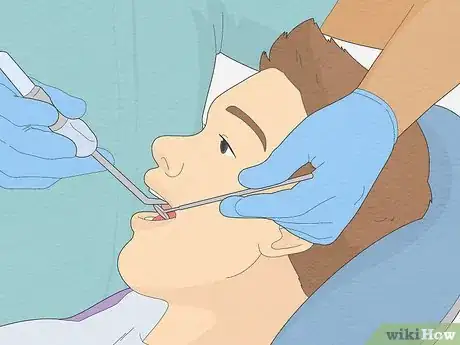

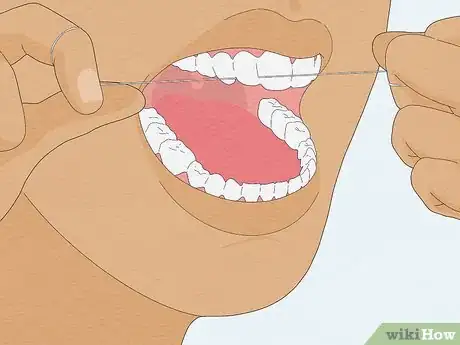
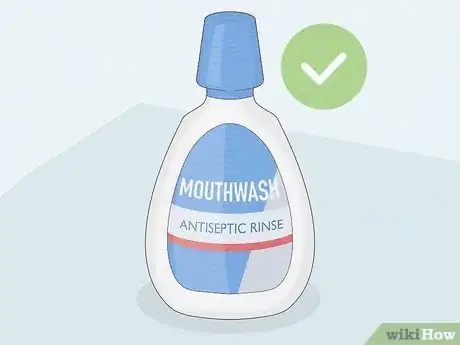
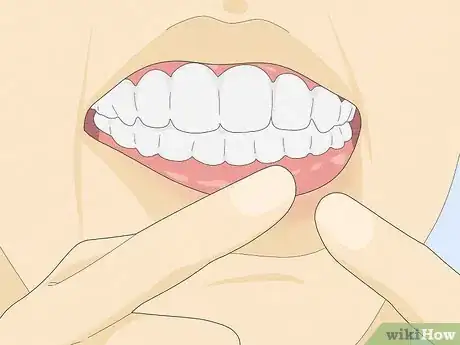
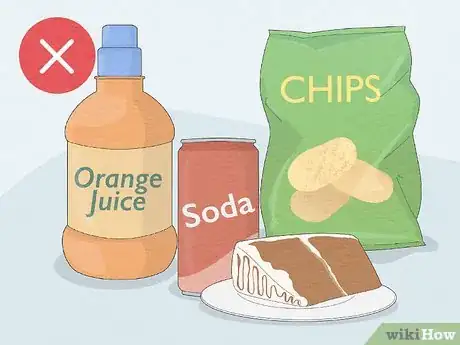



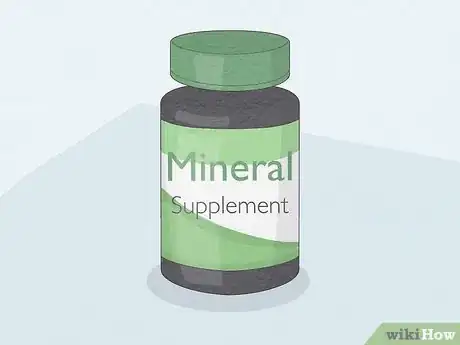
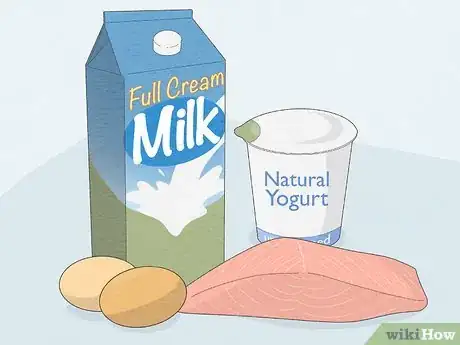
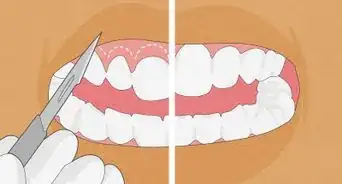
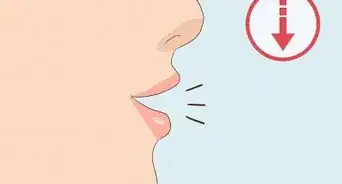
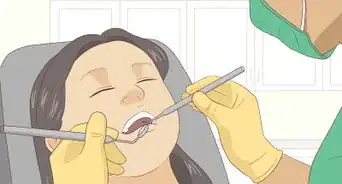

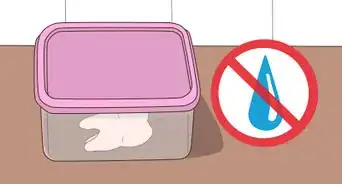
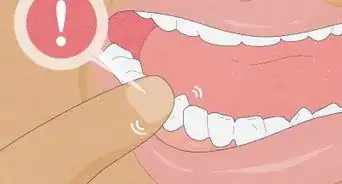

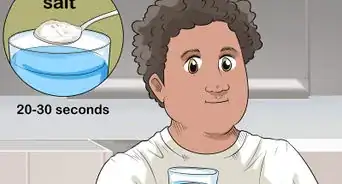
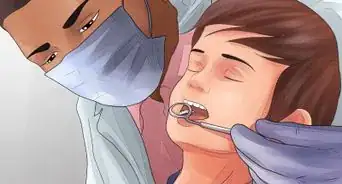












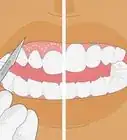
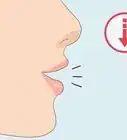
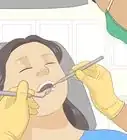




































Medical Disclaimer
The content of this article is not intended to be a substitute for professional medical advice, examination, diagnosis, or treatment. You should always contact your doctor or other qualified healthcare professional before starting, changing, or stopping any kind of health treatment.
Read More...